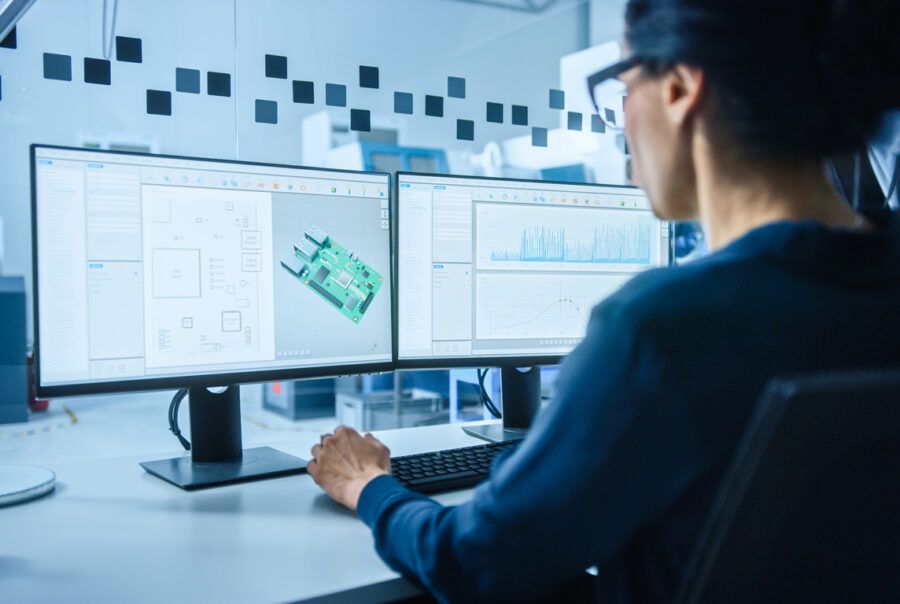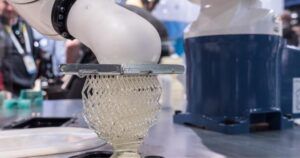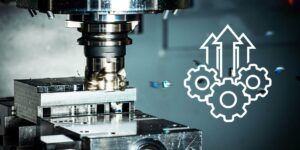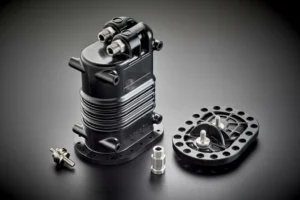There are different types of production systems (project, batch, serial or continuous flow), which are used depending on product demand. Each one obeys a different requirement, since working on a specific project is not the same as continuously developing a product. In this article we will discuss one of them, explain what mass production is and show you the advantages and disadvantages involved in the application of this form of manufacturing.
What is mass production?
Mass production or line production refers to the manufacture of products in large quantities in a standardized manner. Generally, assembly lines and technology are used to automate the process.
In mass production, mechanization is used to achieve high volume, organization of material flow, control of labor division and careful management of quality standards.
The main characteristic of a production line is that the manufacturing process of the product is divided into different phases. This means that in each of them there is a machine or a worker who carries out a specific task.
In addition, the products are manufactured by automated systems, which helps to have knowledge about the optimal quantity to produce and to minimize storage costs. This is excellent for developing homogeneous products or when a large quantity of parts is needed.
Serial production systems are divided into two, short series and long series. They can be classified depending on the sale of the product in the market, so each one has different characteristics. In the following, we will explain each of them.
Short series
Small series production is recommended when there is little investment and the start of production has to be as fast as possible. In addition, it is ideal for new products, the evolved version of an existing product or when the article must be on the market in a short period of time.
In addition, it offers certain advantages such as reduced manufacturing time and cost. It is important to bear in mind that the speed with which the previous phases are carried out determines the profitability of a product developed with this type of series.
Long series
With long series, the production cycle must be perfected. For this reason, the investment of production resources and personnel time must be taken into account in order to achieve maximum performance in all aspects of the production process.
The most important thing in this type of series is to find an optimal way to carry out the manufacturing process, which is based on the design and engineering phase, product development, applied technology and the definition of the supply chain.
Advantages and disadvantages of short-run production
The advantages and disadvantages of mass production are diverse. For this reason, we will carefully analyze the pros and cons of this type of production.
Pros
Firstly, it offers a high rate of precision, since the machinery used has established parameters, providing strict control in production. The second advantage is that the cost is very low, since machining is a very efficient process in terms of cost-performance.
Finally, short-run production offers higher levels of efficiency. This is because as it is an automatic process, products are assembled faster. In addition, this feature provides a greater advantage in terms of competitiveness and profitability, since marketing and distribution are carried out in the shortest possible time.
Cons
As for the disadvantages, we can mention some of them. To implement an assembly line requires a large investment of capital, time and resources. If for some reason there is an error in the design, it will be necessary to invest more resources to rebuild the production process.
In addition, a review of the process is necessary, since making a change would require a different production. For example, for a medical company with an integral assembly line for the production of medical devices, it would mean a large investment of time and money to make a regulatory change.
At IDELT we offer the creation of molds using technologies such as machining, erosion, wire cutting, etc. All this, adapting to an expected production volume, no matter what it is and the materials to be used.
We also employ the injection molding technique using state-of-the-art machinery, responding to the needs of each of our customers. Thanks to this, it is possible to quickly homologate the new molds that will then be produced in series. Contact us and get to know all the services we have to offer.







